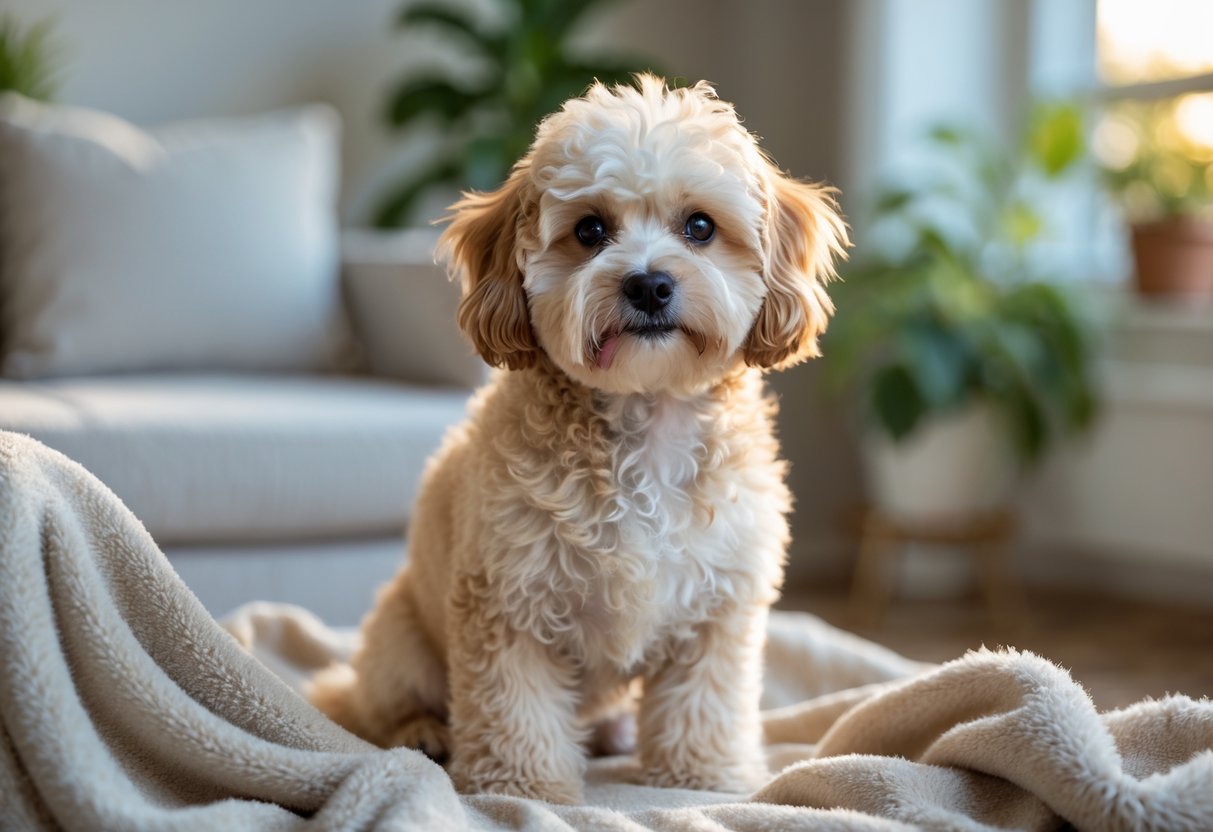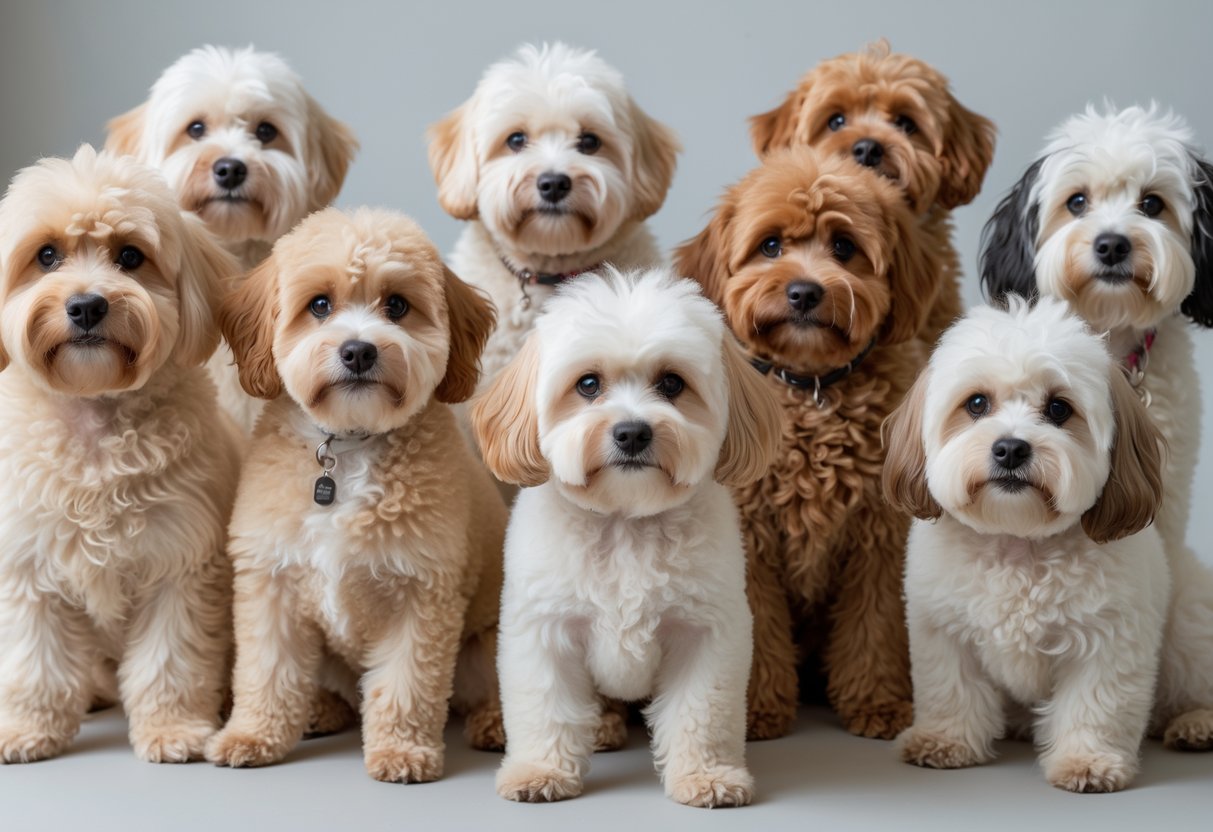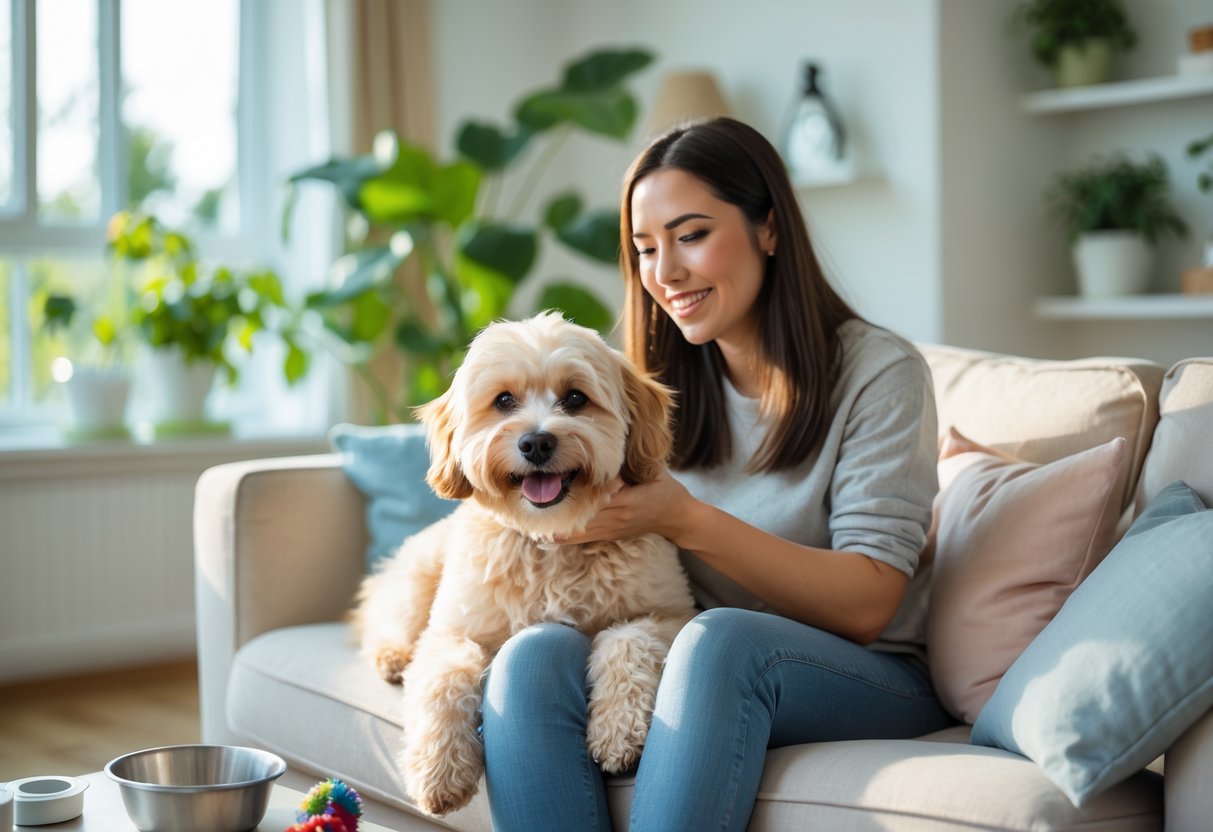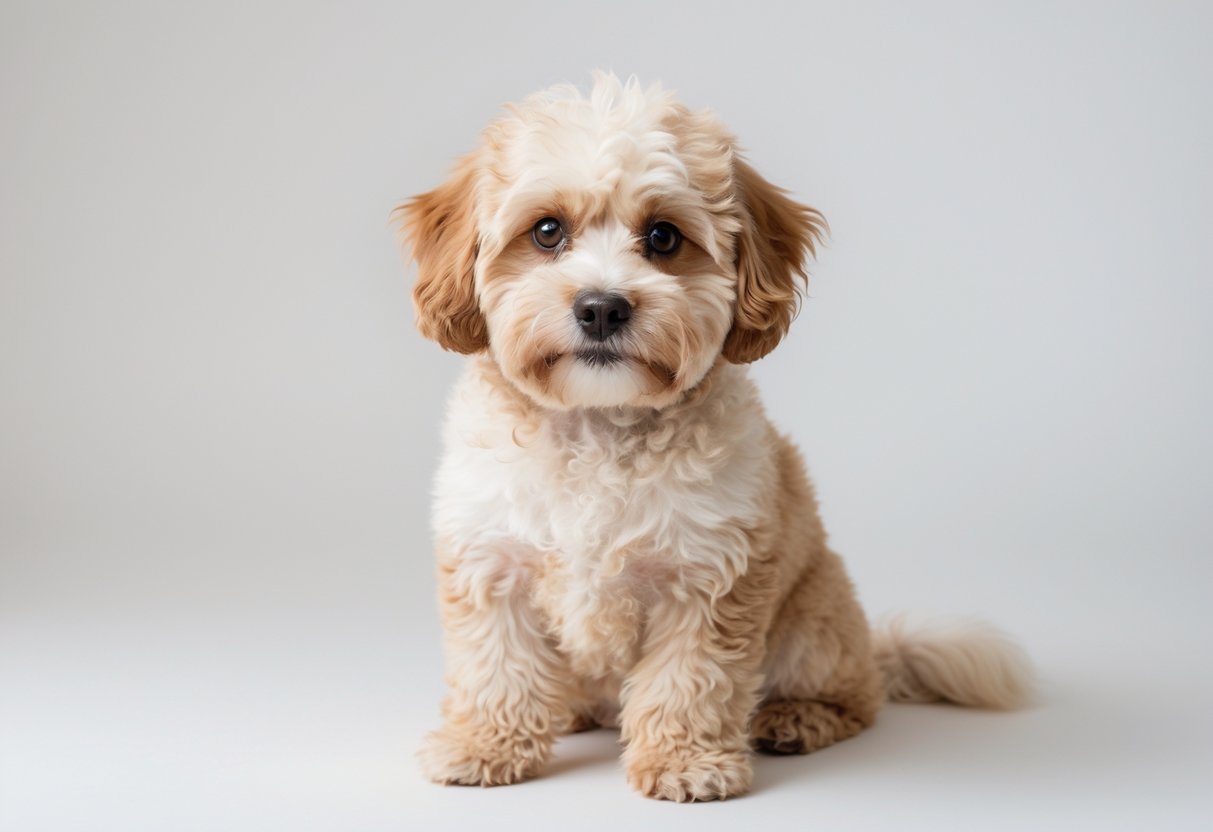Thinking about bringing a Maltipoo into your life? You might be curious what makes this little dog stand out.
A Maltipoo is a friendly, intelligent, and low-shedding companion that adapts well to many homes and lifestyles, making it a great choice for families, singles, or apartment dwellers.
Their mix of Maltese and Poodle breeds brings together the best traits of both. You get a playful, loving pet who wants to be part of your daily routine.
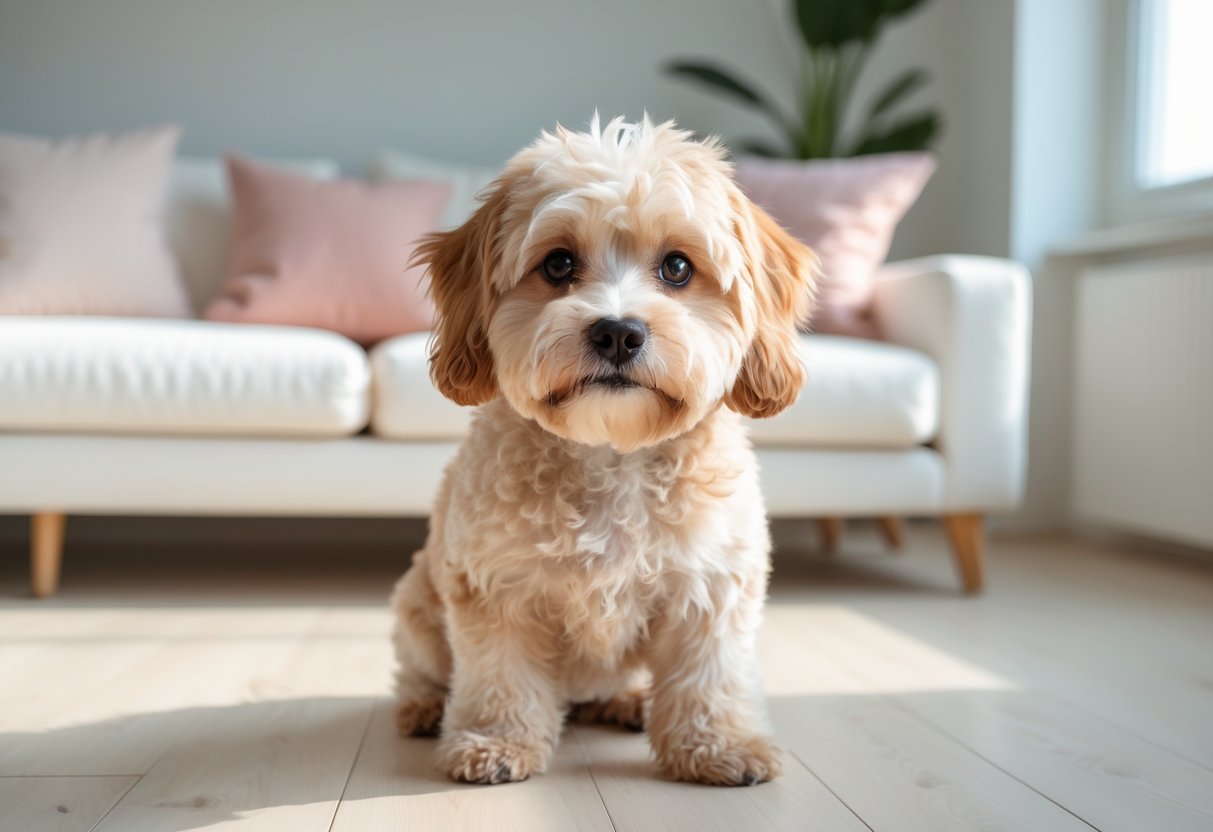
Maltipoos come in a variety of coat types and colours, but all have a sweet nature and a strong desire to please. Their smaller size means they don’t need a big home, but they do need regular care, mental stimulation, and some gentle exercise.
Understanding their needs helps you build a strong bond and keep them healthy. They’re happiest when included in your daily life and routines.
Owning a Maltipoo means plenty of cuddles and fun training sessions. This is a dog that can fit into almost any lifestyle, which is honestly pretty great.
Whether you want to learn about their personality, grooming, or health, knowing more about this charming breed will help you give your new friend the best life possible.
Key Takeaways
- Maltipoos are adaptable and affectionate dogs perfect for many living situations.
- They need regular grooming and mental activity to stay healthy and happy.
- Their friendly nature makes them great companions for people of all ages.
What Is a Maltipoo?
If you’re looking for a small, friendly dog that works in apartments and family homes, a Maltipoo might be just right. This breed blends traits from two popular dogs, giving you a mix that’s loving and easy to care for.
Origins and Development
The Maltipoo is a cross between the Maltese and the Poodle—usually the Toy or Miniature Poodle. Breeders wanted a dog that stayed small, smart, and low-shedding.
They aimed to combine the affectionate nature of the Maltese with the intelligence and hypoallergenic coat of the Poodle. Over the last few decades, this mix has become popular, especially for people looking for a companion dog with fewer allergy issues.
Its development focused on combining the best qualities from each parent. The result? A friendly, playful pet that fits many lifestyles.
Designer and Hybrid Dog Status
You’ll probably hear the Maltipoo called a “designer dog” or hybrid. This just means breeders intentionally mixed two pure breeds instead of following a long traditional lineage.
The idea is to produce healthier dogs with better traits, like being low-shedding or having a steady temperament. As a hybrid, Maltipoos show a mix of traits, and every pup turns out a little different.
They inherit genes from both parents in unique ways, so you never know exactly how your Maltipoo will look or act. That unpredictability is part of the charm, honestly.
Maltese and Poodle Parent Breeds
The Maltese is a small, gentle dog with a silky white coat and a loving personality. It loves being around people and works well for families or singles.
The Poodle, especially the Miniature or Toy varieties, is clever, active, and hypoallergenic—great for folks with allergies. Mix these two, and you’ll often get a soft, curly or wavy coat that sheds less.
You get a dog that’s smart, easy to train, and very affectionate. Both parent breeds are companion dogs, so your Maltipoo will probably want to stick by your side and soak up attention.
Want more details? Check out this guide on Maltipoo dog breed characteristics.
Maltipoo Appearance and Types
Take a look at a Maltipoo and you’ll see a small, lovable dog with a surprising variety of looks. Their size, coat, and colours can change a lot thanks to their Maltese and Poodle background.
Some Maltipoos are tiny, while others are a bit bigger—but they’re always compact and charming.
Size and Physical Characteristics
Maltipoos are small dogs, usually standing 7 to 14 inches tall at the shoulder. Their weight runs from about 4 to 20 pounds, mostly depending on whether their Poodle parent was a Toy or a Miniature.
If your Maltipoo’s Poodle side is a Toy, expect a smaller dog—often called a toy Maltipoo. Some breeders offer teacup Maltipoos, which are even tinier, but these need careful care because they’re so delicate.
Physically, Maltipoos have round, expressive eyes and a cute, button-like nose. Their bodies are sturdy but petite, making them a good fit for apartments or smaller homes.
Coat Types and Colours
Your Maltipoo’s coat could be straight, wavy, or curly. If they take after the Maltese, you’ll see silky, mostly straight hair.
If the Miniature Poodle side is stronger, expect a thick, curly coat that can mat or knot if you don’t groom it often. They come in lots of colours: white, cream, apricot, gold, brown, and even black.
Black Maltipoos are rarer since black isn’t common in Maltese dogs, so if you find one, it’s kind of special. Multi-coloured coats with patches or markings are possible too, thanks to the Poodle’s varied colouring.
Regular grooming keeps their hair healthy and tangle-free, especially if your Maltipoo has a curly coat.
Toy, Teacup and Black Maltipoo
When picking a Maltipoo, size matters for your lifestyle and care routine. Toy Maltipoos come from Toy Poodles and usually weigh between 5 and 12 pounds—perfect lap dogs for small spaces.
Teacup Maltipoos are even smaller, weighing under 5 pounds. They need extra attention since their tiny bodies are fragile, especially when it comes to feeding and keeping warm.
If you want something rare, a black Maltipoo might catch your eye. Black coats come from the Poodle side and are pretty uncommon.
These dogs have smooth or curly black coats, and their noses usually match, giving them a sleek, elegant look. No matter the type, each Maltipoo has a unique appearance that makes your pup truly one of a kind.
Want more info? Check Maltipoo Appearance, Sizes, and Colors.
Personality and Temperament
Bringing a Maltipoo home means you’ll have a dog full of affection, energy, and smarts. Their loving nature makes them great companions, and their playfulness keeps things lively.
Understanding their traits helps you enjoy a better bond and care for their needs.
Typical Maltipoo Temperament
Your Maltipoo will probably be gentle, friendly, and eager to please. They get their loving side from the Maltese and their intelligence from the Poodle, so you end up with a sweet, smart dog.
Maltipoos love being close to you and thrive on attention. Be ready for a dog that might bark to show excitement or alert you to visitors.
They’re sensitive and do best in calm, stable homes. Because they form strong bonds, they might struggle when left alone for long periods and could show signs of separation anxiety.
Compatibility With Children and Pets
Maltipoos usually do well with children if everyone’s introduced properly and treats the dog gently. Their patient and affectionate nature means they often enjoy playing and cuddling with kids.
Small children should be supervised, though, since rough handling can upset or hurt the dog. These dogs are generally friendly with other pets, including cats, especially if socialised early.
Their sociable personalities mean they make easy friends. To keep them confident, let your Maltipoo meet different animals and people from a young age.
Common Behaviours
Maltipoos have bursts of energy and love to play, indoors or outside. Daily walks and interactive games help them burn off energy and stay happy.
If they don’t get enough stimulation, they might start barking or chewing things. They’re keen learners and respond well to training, especially if treats are involved.
Consistency and positive reinforcement work best. You’ll probably notice your Maltipoo following you around and wanting to be part of your routine, often curling up on your lap when it’s time to relax.
If your Maltipoo barks a lot or gets stressed when alone, it’s a sign they need more attention or a bit of special training to ease anxiety.
Care, Health and Living With a Maltipoo
Living with a Maltipoo means you’ll need to meet their needs for exercise, grooming, and health checks. These dogs are smart and social, so they crave both physical activity and mental stimulation.
Some health issues are common in this small breed, so you’ll want to keep an eye out to keep your Maltipoo happy and safe.
Exercise and Daily Needs
Your Maltipoo will do well with about 30 to 45 minutes of exercise every day. Split this into short walks and indoor play sessions.
Since they’re small but energetic, two 15-20 minute walks plus active play at home usually works. Mental activity is just as important as physical exercise.
Puzzle toys, simple training games, or hide-and-seek can keep them sharp. Without enough stimulation, your Maltipoo might get bored and act out.
Social interaction is vital, so spend quality time with your dog every day. Remember, they’re delicate—avoid rough play to protect against injuries like patellar luxation (where the kneecap can dislocate and cause pain or trouble walking).
Grooming, Feeding and Nutrition
Grooming your Maltipoo really needs to happen every day. Their coat just keeps growing and tangles in no time if you skip it.
Spend about 5-10 minutes brushing with a slicker brush and a metal comb. This helps keep their hair smooth and healthy.
Most Maltipoos need a trip to a professional groomer every 6 to 8 weeks. That keeps mats at bay and helps them feel comfortable.
Feeding is just as important. Small breeds like Maltipoos do best with calorie-dense, quality food.
Puppies need 3-4 small meals a day so they don’t get low blood sugar. Adults usually do fine with two balanced meals.
Check the dog food label for real meat as the first ingredient. Skip anything full of fillers—your dog deserves better.
Keep an eye on portions to help your pup stay at a healthy weight. If you have a senior Maltipoo, consider food with joint support since small dogs can get stiff as they age.
Inherited Health Conditions
Maltipoos can inherit some health issues from their parents. Patellar luxation, for example, can cause pain or lameness if you don’t catch it early.
If you notice limping or trouble running, that’s a red flag. Regular vet visits really help spot problems like this.
Progressive retinal atrophy is another inherited issue. It leads to vision loss over time.
If your dog’s eyesight seems off, don’t wait—check in with your vet.
White shaker syndrome causes tremors in some small dogs, including Maltipoos. It usually shows up as uncontrollable shaking, but medication can help manage it.
Dental problems are also pretty common because of their tiny mouths. Daily tooth brushing and regular professional cleanings go a long way.
If you want more details, here’s a complete Maltipoo care guide.
Frequently Asked Questions
People usually have questions about the costs, size, and what it actually takes to care for a Maltipoo. Learning about their growth, coat types, and how to find a good breeder can make the decision feel less overwhelming.
How much should you expect to pay for a Maltipoo puppy?
Maltipoo puppies typically cost anywhere from £800 to £2,000. The price depends on the breeder, your location, and the puppy’s background.
Some breeders include health checks and first vaccinations, so it’s smart to ask what’s included.
At what age is a Maltipoo considered fully grown?
Most Maltipoos reach their full size by 12 to 15 months. Their physical growth wraps up around then.
Younger pups really need extra patience as they grow and learn.
What are the key things to look for when adopting a Maltipoo?
Pick a puppy with bright eyes, a clean, soft coat, and a playful but calm attitude.
Ask the breeder for health clearances to make sure the parents got tested for common genetic conditions.
Early socialisation with people and other animals helps your Maltipoo adjust well.
What’s the average size of a Maltipoo once it reaches adulthood?
Adult Maltipoos usually weigh between 5 and 20 pounds (2 to 9 kg). Their height falls somewhere between 8 and 14 inches (20 to 35 cm).
The exact size depends a lot on whether their Poodle parent was a toy or a miniature.
Where can you find reputable Maltipoo breeders near you?
Try looking up breed clubs, checking with your local vet, or browsing online directories for responsible breeders.
Always visit the breeder’s place yourself, ask for references, and look at health records before you commit.
What are the coat variations and colours commonly found in Maltipoos?
Maltipoos usually have soft, wavy, or curly coats. You’ll often see them in white, cream, apricot, or mixes of these shades.
Their low-shedding coats can work well for people who are sensitive to pet allergens. Still, you’ll need to keep up with regular grooming. For more tips and info, take a look at the Maltipoo Dog Breed Guide.


